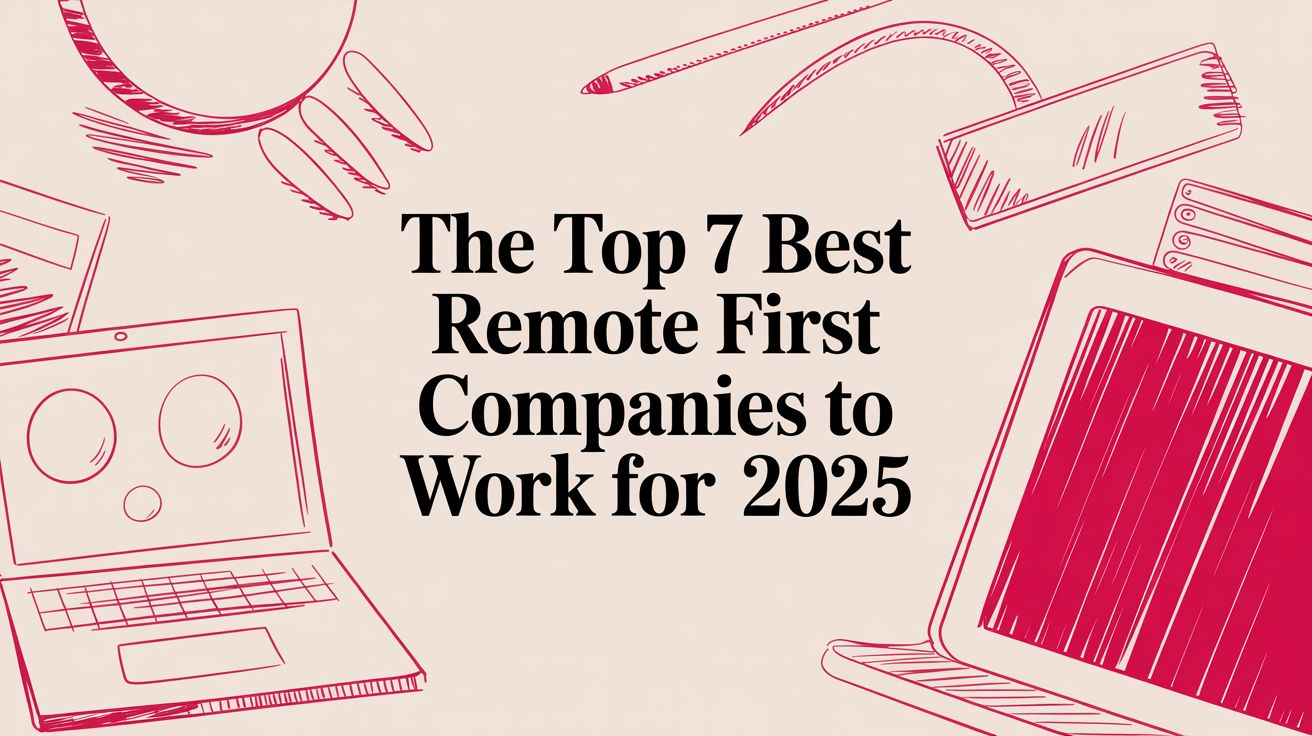10 High-Impact Employee Engagement Survey Questions for 2025
Max
Employee engagement is no longer a buzzword; it’s a critical business metric that directly correlates with productivity, retention, and profitability. But measuring it effectively requires more than a simple annual check-in. The true power lies in asking the right employee engagement survey questions - queries that cut through the noise and reveal actionable insights about your organization’s health. In a world where remote and hybrid work models are prevalent, understanding the employee experience is paramount for success.
This article moves beyond generic templates to provide a curated list of high-impact questions. Each one is designed to diagnose a specific, crucial aspect of the employee journey, from role satisfaction and managerial support to psychological safety and long-term career aspirations. We will break down why each question works, how to implement it, and what actions to take based on the feedback you receive. This will help you build a culture that attracts and retains top talent. You’ll gain practical tools not just for measuring engagement, but for actively improving it.
1. How satisfied are you with your current role and responsibilities?
This is a foundational question among employee engagement survey questions because it directly measures job satisfaction and role alignment. It assesses whether employees find their work meaningful and if their daily tasks match their skills, expectations, and career goals. A positive response indicates that an employee feels their role is a good fit, which is a critical pillar of overall engagement.

Tech giants like Google and Microsoft incorporate this question into their broader engagement assessments, recognizing that role satisfaction is a leading indicator of retention and productivity. Similarly, Gallup’s famous Q12 survey includes elements that touch on having the opportunity to do what you do best every day, which is closely tied to role satisfaction.
### Actionable Tips for Implementation
To get the most out of this question, consider the following strategies:
- Use a Likert Scale: Employ a 5-point or 7-point scale (from “Very Dissatisfied” to “Very Satisfied”) to capture nuanced responses and allow for better data distribution and trend analysis.
- Add a Follow-Up Question: Immediately follow this question with an open-ended one like, “What is one thing you would change about your current role?” This provides qualitative context to the quantitative score.
- Segment Your Data: Analyze results by department, team, or tenure. This can help pinpoint specific areas where role misalignment or dissatisfaction is a problem, such as a team with consistently low scores.
- Track Over Time: This question is most powerful when asked consistently over time. Tracking trends helps measure the effectiveness of interventions, like role redesign or new training initiatives. For a deeper dive into this area, explore more on how to measure employee satisfaction.
2. Do you feel valued and appreciated for your contributions at work?
This question is a powerful indicator among employee engagement survey questions because it taps into the fundamental human need for recognition. It assesses whether employees believe their efforts are seen and valued by managers and peers, which directly influences morale, motivation, and loyalty. A strong sense of appreciation fosters a positive emotional connection to the workplace, making employees more likely to invest discretionary effort.

Major workplace studies, like Towers Watson’s Global Workforce Study, consistently highlight recognition as a top driver of engagement. Companies renowned for their positive cultures, such as Zappos and Southwest Airlines, have built their foundations on this principle, proving that feeling valued is not just a perk but a strategic business advantage. Deloitte’s research on workplace culture also uses this metric to gauge organizational health and inclusivity.
### Actionable Tips for Implementation
To effectively measure and improve employee recognition, consider these strategies:
- Implement Peer-to-Peer Recognition: Create a system, like a dedicated Slack channel or a formal platform, where employees can publicly acknowledge and thank their colleagues.
- Train Managers on Specific Recognition: Coach leaders to provide timely, specific, and meaningful feedback instead of generic praise. This skill is a core component of what is inclusive leadership.
- Celebrate Team Wins: Establish rituals for celebrating team milestones and project completions. This reinforces a collective sense of accomplishment and shared success.
- Ensure Visible Recognition: Feature employee achievements in company newsletters, all-hands meetings, or on internal communication platforms to amplify the impact of the recognition.
- Supplement with 360-Degree Feedback: Use multi-rater feedback to provide a holistic view of an employee’s contributions, ensuring that recognition comes from all levels of the organization.
3. How well does your manager support your professional growth and development?
This is one of the most critical employee engagement survey questions because it directly links management effectiveness to individual career aspirations. It measures whether employees feel their direct supervisor is invested in their long-term success, a factor that significantly impacts motivation, loyalty, and retention. A high score indicates that managers are acting as coaches and mentors, not just taskmasters.
Research from McKinsey consistently shows that a lack of career development and advancement is a top reason employees quit. Furthermore, Google’s famous Project Oxygen study identified “is a good coach” as the number one behavior of a great manager, which includes supporting career development. Companies like Microsoft now heavily emphasize developing managers’ coaching capabilities for this very reason.
### Actionable Tips for Implementation
To maximize the value of this question, implement the following strategies:
- Use a Frequency Scale: A scale like “Never,” “Rarely,” “Sometimes,” “Often,” “Always” works well here, as it measures the consistency of the manager’s support.
- Create Individual Development Plans (IDPs): Use the survey feedback to launch or refine a formal IDP process. This ensures that development conversations are structured, documented, and lead to tangible actions.
- Provide Manager Training: If scores are low, invest in training managers on how to have effective career coaching conversations. Provide them with conversation guides and templates to build their confidence and skill.
- Establish Clear Career Pathways: Support managers by creating transparent career ladders and progression criteria. This gives them a clear framework to guide their team members. For more information, explore these performance management best practices.
4. Do you have the tools, resources, and information needed to do your job effectively?
This is one of the most practical employee engagement survey questions because it directly addresses operational enablement. It uncovers barriers to productivity, such as outdated technology, information silos, or insufficient budgets. When employees feel they lack the necessary support to perform their roles, frustration builds, and engagement plummets. A positive response indicates a well-supported workforce.
This question is a cornerstone of many successful engagement strategies. Gallup’s renowned Q12 survey includes a question about having the materials and equipment to do work right. Tech companies like Atlassian continuously monitor infrastructure satisfaction to remove friction for their engineering teams. Following the shift to remote work, this question became even more critical for identifying gaps in home office setups and digital collaboration tools.
### Actionable Tips for Implementation
To maximize the insights gained from this question, apply these strategies:
- Be Specific: Instead of one general question, break it down into categories like technology (hardware/software), information access, budget, and training. This provides more granular data.
- Prioritize Needs: Follow up with an open-ended question like, “If you could improve one resource to make your job easier, what would it be?” This helps you prioritize investments that will have the biggest impact.
- Conduct Resource Audits: Use the feedback to conduct annual audits of your technology stack and internal knowledge bases. This ensures your resources evolve with your team’s needs.
- Close the Loop: Communicate back to employees about the changes made based on their feedback. If a requested tool is implemented or a process is improved, share that success to show that their voice matters. For guidance on equipping your staff, explore these essential tools for remote teams.
5. How clear are the company’s goals and your role in achieving them?
This is one of the most critical employee engagement survey questions as it gauges alignment and purpose. It measures the degree to which employees understand the broader organizational strategy and, more importantly, see how their individual contributions directly support those objectives. Clarity of purpose is a fundamental driver of motivation, affecting decision-making and discretionary effort at all levels of the business.

Leading companies understand the power of this connection. Google’s OKR (Objectives and Key Results) methodology is built around creating transparent, aligned goals. Similarly, Bain & Company’s engagement research consistently highlights goal clarity as a core component of a high-performance culture. When employees can connect their daily tasks to a larger mission, their work feels more meaningful and impactful.
### Actionable Tips for Implementation
To gain meaningful insights from this question, apply these strategies:
- Use a Scale and a Follow-Up: Ask this question using a 5-point agreement scale (from “Not at all clear” to “Extremely clear”). Follow it with an open-ended question like, “What would make our company goals clearer to you?”
- Cascade and Communicate Goals: Implement a goal-setting model that cascades from the company level to teams and then to individuals. Use town halls and team meetings to regularly communicate strategy and progress.
- Visualize Progress: Make company and team goals highly visible using dashboards, internal wikis, or other shared platforms. Celebrating milestones transparently reinforces their importance and shows how individual efforts add up.
- Empower Manager Conversations: Train managers to hold quarterly goal-alignment conversations. These check-ins ensure that individual goals remain relevant and that employees understand their role in the bigger picture. Strengthening this dialogue is key, and you can explore more ways to improve workplace communication.
6. Do you feel a sense of belonging and connection with your team and colleagues?
This question probes the crucial psychological need for social connection and belonging within the workplace. It moves beyond individual role satisfaction to measure the health of interpersonal relationships and team culture. A strong sense of belonging means employees feel accepted, included, and valued for who they are, which is a powerful driver of engagement, collaboration, and retention.
Organizations like Deloitte and Salesforce have made belonging a cornerstone of their culture and D&I strategies, recognizing its direct impact on employee well-being and performance. Post-pandemic studies have consistently shown that feelings of connection have become even more critical, especially in remote or hybrid environments where organic social interactions are less frequent. This makes it a vital component of modern employee engagement survey questions.
### Actionable Tips for Implementation
To effectively measure and improve team connection, consider these strategies:
- Use a Sliding Scale: A scale from “Strongly Disagree” to “Strongly Agree” works well to quantify feelings of belonging. This allows for easy tracking and comparison across different demographics.
- Establish Employee Resource Groups (ERGs): Create and support ERGs to provide dedicated spaces for employees with shared backgrounds or interests to connect, fostering a stronger sense of community.
- Implement a Buddy Program: Pair new hires with seasoned employees to facilitate immediate social connection and help them navigate the company culture from day one.
- Facilitate Cross-Team Collaboration: Design projects that require different departments to work together. This breaks down silos and builds relationships across the organization. For remote teams, create virtual social spaces and rituals like “virtual coffee chats” to replicate informal office interactions.
7. How likely are you to recommend this company as a great place to work?
This question is the cornerstone of the Employee Net Promoter Score (eNPS), a powerful metric adapted from the customer-facing Net Promoter Score (NPS). It provides a single, high-level snapshot of employee loyalty and advocacy. A positive answer signals that an employee is not just satisfied but is willing to actively endorse the organization, making it a critical leading indicator of both engagement and potential turnover.
This simple yet effective question is used extensively by Fortune 500 companies, including Amazon and Microsoft, to gauge workforce sentiment quickly. Its strength lies in its simplicity and comparability, allowing organizations to benchmark their score against industry standards and track improvements over time. The concept, developed and popularized by Bain & Company, boils complex feelings about company culture, leadership, and opportunities into one actionable number.
### Actionable Tips for Implementation
To maximize the value of this crucial employee engagement survey question, follow these best practices:
- Use a 0-10 Scale: Stick to the standard 0-10 scale where 0 is “Not at all likely” and 10 is “Extremely likely.” This allows you to categorize respondents into Promoters (9-10), Passives (7-8), and Detractors (0-6).
- Always Ask “Why?”: Immediately follow the rating question with an open-ended one like, “What is the primary reason for your score?” This qualitative feedback is essential for understanding what drives both positive and negative sentiment.
- Segment Your Data: Analyze eNPS scores by department, tenure, and location. This helps identify pockets of disengagement and pinpoint specific leadership or cultural issues that need attention.
- Establish Leadership Accountability: Make improving eNPS a shared goal for leadership teams. Tie improvement actions directly to the feedback from Detractors and track progress quarterly or semi-annually to demonstrate commitment.
8. Do you receive regular, constructive feedback on your performance?
This is one of the most critical employee engagement survey questions because it measures the effectiveness of an organization’s feedback culture. It assesses whether employees receive timely, specific, and actionable guidance that helps them grow, rather than waiting for a formal annual review. A strong, positive response indicates that managers are actively coaching their teams, which is a direct driver of development, confidence, and engagement.
Companies like Adobe and Microsoft famously moved away from traditional annual reviews to a continuous feedback model after recognizing its impact on morale and performance. Research from Gallup consistently shows that employees who receive regular feedback are significantly more engaged. The rise of platforms like Lattice and 15Five further highlights the industry-wide shift toward normalizing frequent, constructive conversations as a core management practice.
### Actionable Tips for Implementation
To make feedback a cornerstone of your engagement strategy, consider these steps:
- Define a Feedback Cadence: Set clear expectations for managers to hold regular check-ins, such as weekly or bi-weekly. This makes feedback a routine part of the workflow, not a special event.
- Train Your Managers: Equip leaders with the skills to deliver both positive and developmental feedback effectively. The Radical Candor framework is a popular model for teaching how to be direct while showing you care.
- Use a 5-Point Frequency Scale: Ask respondents to rate the frequency and quality on a scale from “Never” to “Very Frequently” or “Not at all Constructive” to “Very Constructive” to get precise, measurable data.
- Balance Praise and Critique: Encourage a healthy ratio of positive to developmental feedback. To ensure employees receive the recognition they deserve and to foster a culture of growth, delve into powerful positive feedback examples that can significantly boost team morale and engagement.
- Expand Feedback Sources: Don’t limit feedback to just the manager-employee relationship. Implement systems for 360-degree feedback that include peer reviews and self-assessments to provide a more holistic view of performance.
9. Does the company allow you to maintain a healthy work-life balance?
This question directly assesses whether your organization’s culture, policies, and workload expectations support employee well-being. It is a critical component of modern employee engagement survey questions, as it measures the perceived flexibility and respect for employees’ personal lives. A positive response indicates that the company successfully fosters an environment where employees can thrive both professionally and personally, which is a major factor in preventing burnout and turnover.

The importance of this metric skyrocketed post-pandemic, with a 2022 Gallup analysis identifying it as a top driver of employee engagement. Companies like Patagonia and Unilever are often cited as leaders in this area, championing policies that actively promote balance. The widespread adoption of flexible and remote work arrangements, which grew significantly after 2020, is a direct organizational response to this growing employee need.
### Actionable Tips for Implementation
To gather meaningful data and drive real change with this question, consider these strategies:
- Benchmark Against Workload Data: Pair this question with a separate, more detailed workload survey. This helps you understand if the perception of poor work-life balance is linked to actual excessive hours or inefficient processes.
- Establish Clear Boundaries: Implement and communicate clear policies, such as “no-email” hours or “meeting-free” days, to protect employees’ personal time. Leadership must model this behavior to make it culturally acceptable.
- Segment by Work Arrangement: Analyze responses based on whether employees are in-office, hybrid, or fully remote. This can reveal unique challenges faced by each group and inform targeted support strategies.
- Train Managers: Equip managers with the skills to recognize signs of burnout, manage team workload effectively, and have supportive conversations about balance. Their role is crucial in translating company policy into daily reality.
10. Do you see a future for yourself at this company?
This is one of the most forward-looking employee engagement survey questions, as it directly assesses retention likelihood and perceived career opportunities. It gauges whether employees can envision a long-term trajectory within the organization, making it a powerful predictor of voluntary turnover. A negative trend in responses to this question is a clear warning sign that top talent may be at risk of leaving.
Major consulting firms like McKinsey have identified a lack of career development and advancement as a top reason for employees quitting. By asking this question, organizations can diagnose potential retention issues before they escalate. It provides critical data for succession planning and talent management strategies, revealing how effectively the company is communicating and providing growth pathways.
### Actionable Tips for Implementation
To get the most value from this crucial question, apply these strategies:
- Pair with Specifics: Follow up with questions about specific growth opportunities, such as, “Do you feel you have adequate opportunities for professional development?” to identify the root cause of an employee’s sentiment.
- Segment Your Data: Analyze responses by tenure, department, and role level. New hires who answer “no” may signal a problem with onboarding, while a negative response from senior employees could indicate a bottleneck in leadership development.
- Conduct “Stay Interviews”: For employees or teams with low scores, proactively conduct stay interviews. Ask them what would need to change for them to see a long-term future, gathering direct feedback to inform retention strategies.
- Communicate Growth Paths: Regularly showcase internal promotion success stories and clearly define criteria for advancement. Ensure managers are equipped to have meaningful career pathing conversations with their direct reports.
10-Question Employee Engagement Comparison
| Question | 🔄 Implementation complexity | ⚡ Resource requirements | 📊 Expected outcomes | 💡 Ideal use cases | ⭐ Key advantages |
|---|---|---|---|---|---|
| How satisfied are you with your current role and responsibilities? | Low — single Likert item | Low — basic survey & analysis | Baseline job satisfaction; flags role misalignment | Annual engagement surveys; role redesigns | Quick baseline insight; easy to act on |
| Do you feel valued and appreciated for your contributions at work? | Low–Medium — single item with cultural nuance | Low–Medium — survey + recognition programs | Reveals appreciation gaps; predicts retention | Culture assessments; retention interventions | Strong retention predictor; low-cost fixes |
| How well does your manager support your professional growth and development? | Medium — needs manager linkage & follow-up | Medium–High — training, IDPs, coaching | Identifies manager coaching gaps; impacts retention | Leadership development; succession planning | Direct impact on retention and talent growth |
| Do you have the tools, resources, and information needed to do your job effectively? | Low–Medium — diagnostic may need role detail | Medium — tech updates, training, budget | Identifies operational blockers; high ROI fixes | Remote/hybrid enablement; IT prioritization | Concrete, fixable issues; boosts productivity |
| How clear are the company’s goals and your role in achieving them? | Medium — requires goal cascade & reinforcement | Low–Medium — comms, OKR tools, dashboards | Improves strategic alignment and accountability | OKR rollouts; change management | Increases purpose and better decision-making |
| Do you feel a sense of belonging and connection with your team and colleagues? | Medium — subjective; needs qualitative follow-up | Medium–High — ERGs, facilitation, team programs | Signals inclusion issues; affects retention & collaboration | DEI programs; remote team cohesion | Drives retention and stronger collaboration |
| How likely are you to recommend this company as a great place to work? (eNPS) | Low — single 0–10 metric | Low — survey platform + segmentation | Overall advocacy; benchmarkable turnover signal | Org-level tracking; benchmarking against peers | Simple, widely understood, predictive metric |
| Do you receive regular, constructive feedback on your performance? | Medium — needs cadence definition & standards | Medium — manager training, feedback platforms | Accelerates development; improves performance | Continuous feedback adoption; talent growth | Enables faster development; reveals manager gaps |
| Does the company allow you to maintain a healthy work-life balance? | Medium — policy and cultural change required | Medium–High — flexible policies, wellbeing programs | Reduces burnout; improves retention and wellbeing | Wellbeing initiatives; flexible work policy design | Major driver of retention; sustains productivity |
| Do you see a future for yourself at this company? | Medium — needs segmentation and contextual follow-up | Medium — internal mobility, career programs | Leading indicator of turnover; reveals career gaps | Succession planning; stay interviews | Early warning on flight risk; informs talent strategy |
Turning Answers into Action: The Path to a Thriving Workplace
The ten powerful employee engagement survey questions we’ve explored serve as a critical starting point, not a final destination. They provide a comprehensive snapshot of your organization’s health, from individual role satisfaction and managerial support to overall company culture and future outlook. The real power, however, is not unlocked by simply asking these questions. It’s unleashed in the moments that follow, through the commitment to listening, understanding, and, most importantly, acting on the feedback you receive.
A survey without follow-through is worse than no survey at all; it erodes trust and signals that employee voices don’t truly matter. To avoid this pitfall, your post-survey strategy is paramount. The journey from data collection to a genuinely thriving workplace involves a deliberate and transparent process. It’s about transforming raw numbers and comments into a strategic roadmap for cultural improvement.
From Feedback to Forward Momentum: Your Action Plan
The true measure of your survey’s success will be the tangible changes employees see and feel. Merely acknowledging the results is not enough. Here are the essential next steps to ensure your efforts create lasting impact:
- Communicate Transparently: Start by sharing the high-level, anonymized results with the entire organization. Acknowledge the wins and openly own the areas that require improvement. This transparency builds psychological safety and shows respect for the vulnerability employees showed in their responses.
- Empower Action-Planning Teams: Avoid a top-down approach where solutions are dictated by leadership alone. Instead, create cross-functional teams of employees from various levels and departments to brainstorm and develop solutions. This empowers your people to be co-creators of the culture they want to be part of.
- Focus on Targeted Improvements: Rather than trying to fix everything at once, identify two or three key areas for focused effort. Whether it’s enhancing professional development opportunities or improving work-life balance, concentrated action yields more visible and meaningful results. To effectively respond to survey feedback and cultivate a better workplace, exploring a complete guide to employee engagement training can be incredibly beneficial for equipping managers and leaders with the right skills.
- Establish a Continuous Conversation: An annual survey is a single data point. The most engaged workplaces treat feedback as a continuous loop. Supplement your annual deep-dive with more frequent, lightweight pulse surveys to track progress and maintain an ongoing dialogue about the employee experience.
By consistently turning these answers into action, you create a virtuous cycle. Employees see their feedback is valued, leading to more honest and constructive input in the future. This commitment is what transforms a company from a place where people simply work into a community where they feel connected, supported, and motivated to do their best. This is the foundation of a thriving remote or hybrid culture that attracts and retains top talent.
Ready to attract professionals who thrive in engaged, supportive, and forward-thinking work environments? Post your open roles on Remote First Jobs to connect with a global community of top-tier talent seeking companies that prioritize an exceptional employee experience. Find your next great hire at Remote First Jobs today.


